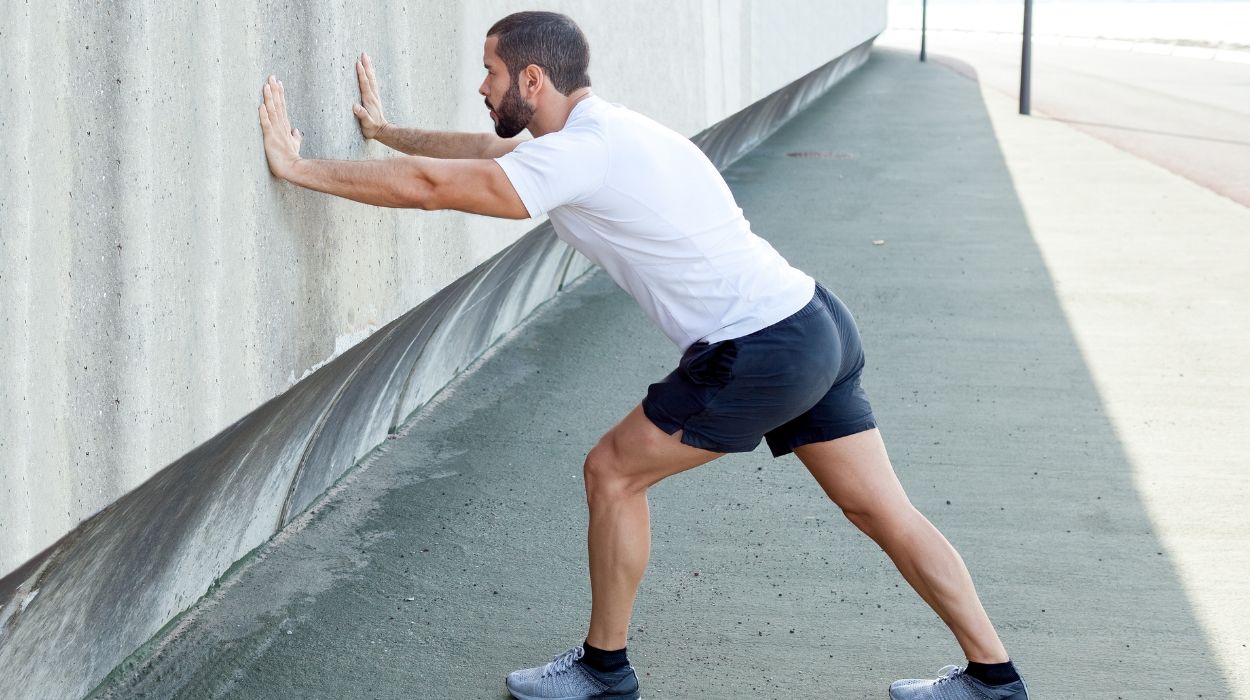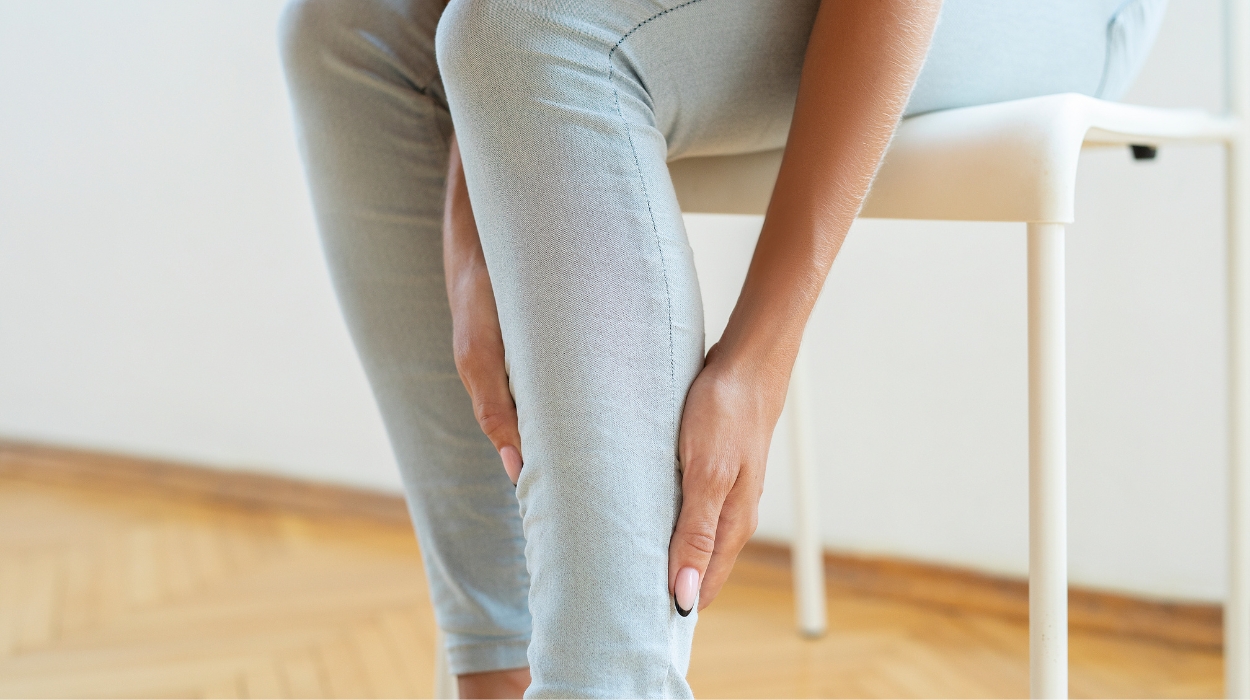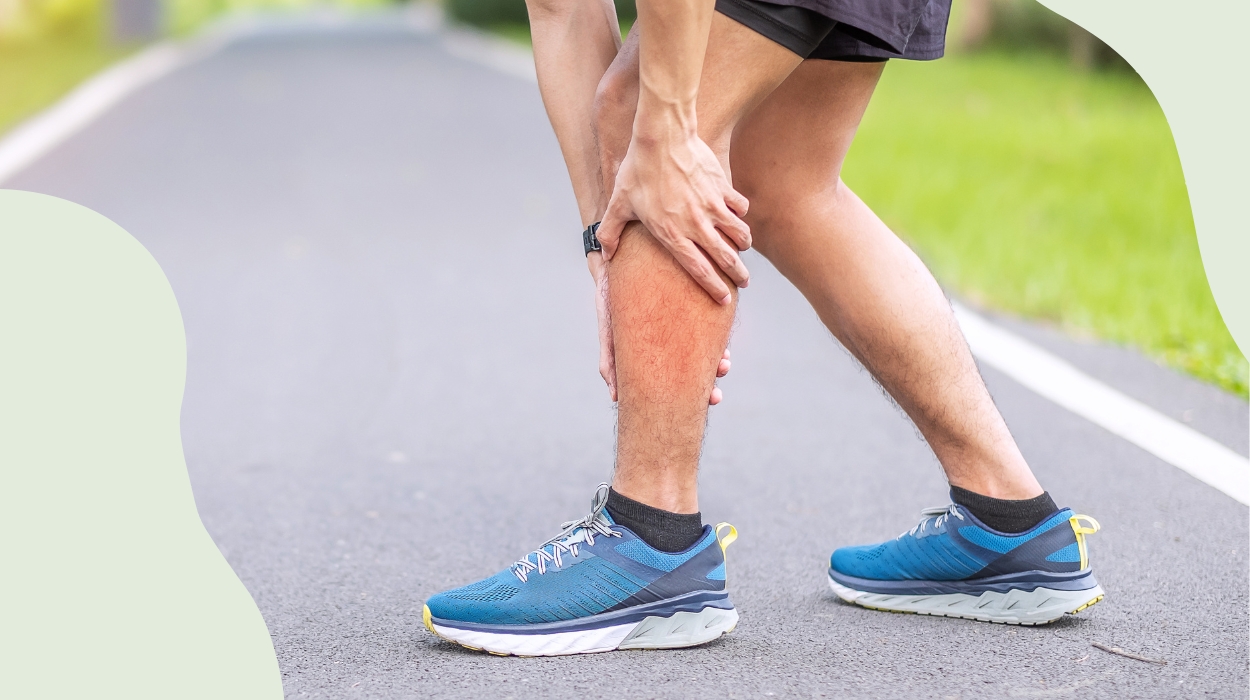Recovering from a pulled calf muscle can be daunting, but with the right treatment, you can recover from a calf injury in no time. This comprehensive guide will provide you with all the information you need to effectively treat a pulled calf muscle at home. From understanding the symptoms of a pulled calf muscle to learning the best stretches and therapies to reduce calf muscle pain, learn more now.
What Is A Pulled Calf Muscle and How To Treat?
A pulled calf muscle, also known as a calf strain, occurs when the fibers in the gastrocnemius muscle are overstretched or torn. This can happen due to sudden movements, overexertion, or inadequate warm-up before exercise. The severity of a calf strain can range from mild to severe, with symptoms varying accordingly.
- Home treatment options include rest, ice, compression, and elevation of the affected leg.
- Recovery time can vary but typically takes a few weeks to a few months, depending on the severity of the injury.
- If symptoms persist or worsen, seeing a doctor for further evaluation and treatment is important.
Symptoms Of Pulled Calf Muscle
The symptoms of a pulled calf muscle can vary based on the severity of the strain. Some signs of a calf strain include:
- Sudden sharp pain in the calf muscle.
- Swelling or bruising of the area.
- Pain while flexing or pointing your foot.
- Tenderness around the affected area.
- Difficulty walking/putting weight on the affected leg.
If you’re experiencing these symptoms, starting treatment to prevent further damage and promote a speedy recovery is important.
Home Treatment For Calf Muscle Strains

When it comes to treating a calf muscle injury, there are several effective home remedies you can try. These treatments focus on reducing pain and inflammation, and promoting healing. Combining different approaches can accelerate your recovery and get you back on your feet faster.
Stretches
Stretching is a crucial part of the home treatment for your injured calf. You can help improve flexibility and promote healing by gently stretching the affected muscle. Here are a few effective stretches you can try:
- Calf Stretch: Stand facing a wall and place your hands on it for support. Take a step back with your injured leg, keeping it straight. Slowly lean forward, bending your front knee, until you can feel the stretch in your calf muscle. Hold for 30 seconds, relaxing the muscle after. Repeat this stretch 3-4 times, several times a day.
- Seated Calf Raise: Sit in a chair with your feet flat on the floor. Slowly raise the heel of your injured calf off the ground, lifting with your calf muscles. Hold for a few moments, then slowly lower your heel. Repeat this exercise 10-15 times, 2-3 times daily.
Remember to start with gentle stretches and gradually increase the intensity as your muscle heals. Stop immediately and consult a healthcare professional if any stretch causes pain or discomfort.
Ice and Heat Therapy
While they won’t directly heal your strained calf muscle, ice and heat therapy can reduce pain and inflammation associated with a pulled calf muscle. Cold from ice helps numb the area, decrease swelling, prevent muscle spasms, and constricts blood vessels, while heat promotes blood flow and relaxes the muscle. Here is how you can use ice and heat therapy at home:
- Cold compress: Apply a cold compress or ice pack to the area for 15-20 minutes several times daily. This will help reduce swelling and alleviate pain.
- Warm compress: After 48-72 hours of using cold compresses, you can switch to warm compresses. Apply a warm towel or heating pad to the area for 15-20 minutes several times daily. This can help improve blood flow to the injured muscle and promote healing.
Always use a barrier, such as a cloth, between your skin and the cold or warm compress to prevent burns or frostbite.
Compression Therapy
Compression is another effective home treatment for your strained calf muscle. Using an elastic bandage or compression sleeve can reduce swelling in the area, alleviate calf pain, and provide support to the injured muscle.
Keep the bandage on for most of the day, but remember to remove it at night to allow your leg to breathe and prevent circulation issues.
Elevation
Elevating your leg is a simple, yet effective way to reduce swelling and promote healing. Raising your leg above the level of your heart can help improve blood flow and prevent excess fluid build-up in the injured muscle.
Remember to elevate your leg when sitting or lying down, even during sleep. This will help expedite your recovery and prevent any complications.
Over-the-Counter Pain Relief
Over-the-counter (OTC) pain relief medications can temporarily relieve the discomfort associated with a calf muscle strain. Non-steroidal anti-inflammatory drugs (NSAIDs) like ibuprofen or acetaminophen can help reduce calf pain, inflammation, and swelling.
It is important to read and follow the instructions on the packaging of the medication. Take the recommended dosage and do not exceed the maximum daily limit.
OTC pain relief should only be used as a temporary solution and should not replace other treatments or professional medical advice. If your symptoms persist or worsen, seek further medical attention.
Recovery Time For Pulled Calf Muscle

The recovery time for a calf muscle strain varies depending on the severity of the injury. Mild strains may heal within a few days to a week, while more severe strains can take several weeks or months to fully recover. Proper treatment, including rest, gentle exercises, and physical therapy, will help speed the recovery process.
How To Prevent A Calf Strain?
Preventing a calf strain is always better than dealing with the pain and inconvenience of recovery. To minimize the risk of a pulled calf muscle, it is crucial to warm up properly before any physical activity, maintain a regular exercise routine to keep the calf muscles strong and wear appropriate footwear that provides adequate support.
When To See A Doctor
While most pulled calf muscles can be effectively treated at home, sometimes it is necessary to seek medical attention. If you experience severe calf pain, cannot walk or put weight on the affected leg, notice excessive swelling or bruising, or suspect a blood clot, it is important to consult a healthcare professional.
Conclusion
Recovering from a pulled calf muscle requires patience, dedication, and the right treatment approach. By following the home remedies and techniques outlined in this article, you can effectively treat a pulled calf muscle and get back on your feet as quickly as possible. Listen to your body, take it slow, and gradually increase activity levels to avoid re-injury. With proper care and perseverance, you will be back to your active lifestyle in no time!
Frequently Asked Questions
Calf strains can be painful, and the severity can range from mild to severe. If you have a calf strain, you might benefit from the answers to some of the following frequently asked questions.
It is best to rest and avoid strenuous exercise until your pulled calf muscle has fully healed. Overexertion can delay the recovery process and increase the risk of further injury.
In rare cases, a severe strain or tear in the calf muscle can lead to complications such as a blood clot. If you experience persistent pain, swelling, or other concerning symptoms, it is important to seek medical attention.
You should start gentle stretching exercises once the acute phase of the injury has passed. Consult with a healthcare professional or physical therapist to determine the appropriate timing and exercises for your specific condition.
With proper treatment and rehabilitation, most people recover fully from a pulled calf muscle without any long-term effects. However, it is essential to follow a gradual return to activity plan to prevent future injuries.
Yes, physical therapy can be highly beneficial in the recovery process of a pulled calf muscle. A physical therapist can guide you through specific exercises, stretches, and techniques to strengthen the calf muscles and prevent future injuries.
